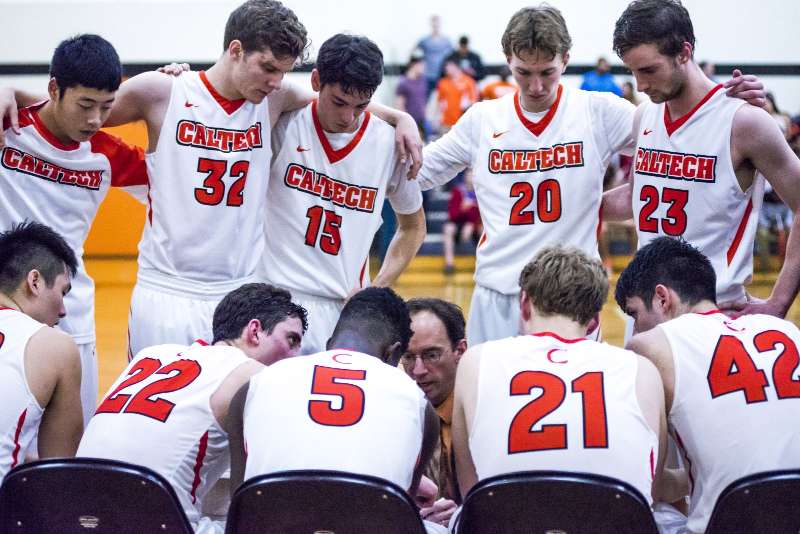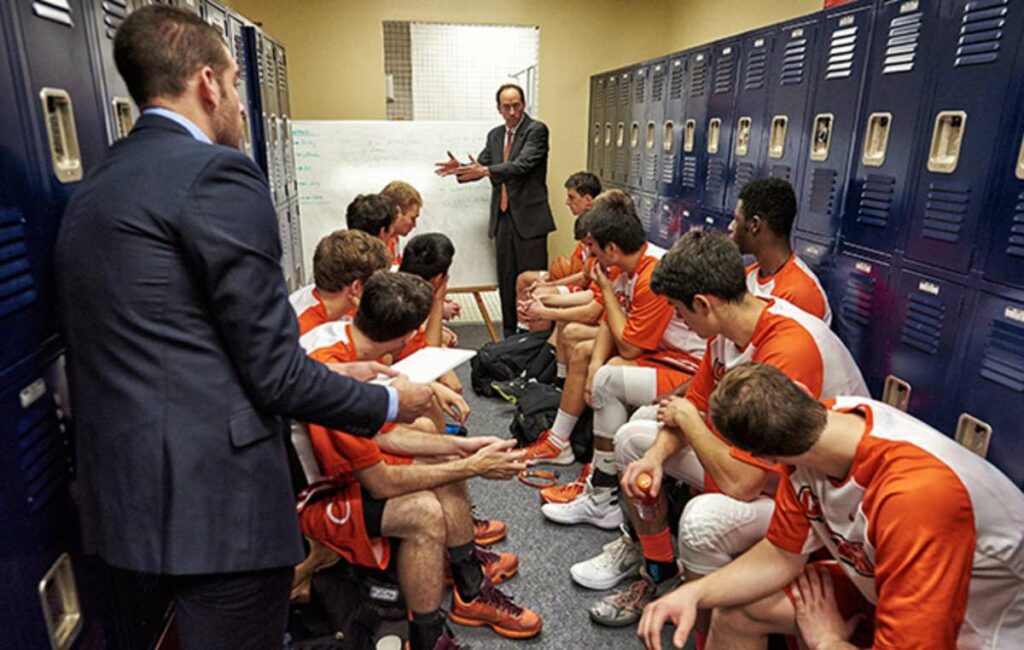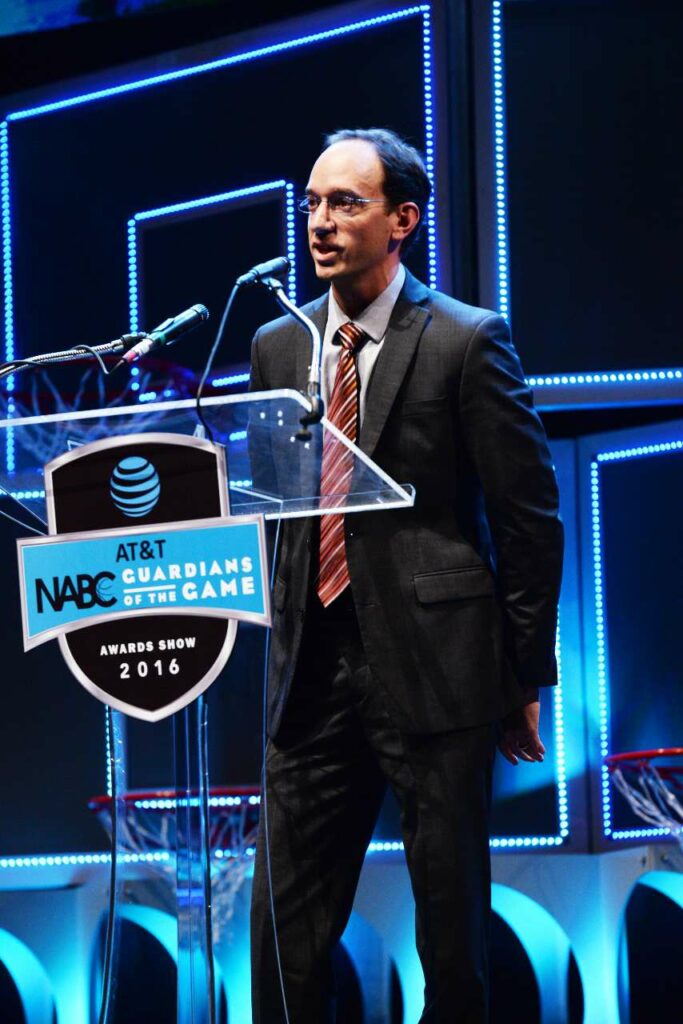

We are what we believe. So what are your steps to improvement? How do you get there?
In our program, we take great pride in the basketball enhancement of all players. Whether the top player on the team or the fledgling teammate, we operate with the mindset that “player development” is a main coaching cog, and by subscribing to that theory, we can help write the narrative for each athlete.
Especially when you are a part of a program that cannot simply select its roster, it’s imperative there is a constant thought process in the ‘how’: How do we train a particular skill? How do we get our players to move as one? How do we create a strong belief mentality—one that is rich in psychological methodology and research?

Our focus remains on the bondage of physical and mental. To us, they are synonymous. Our brain is a part of our body, and though there are various interpretations of the mind or soul, there exists an interconnectedness that cannot be overlooked. For if it is, not only will we fail to accelerate learning, we won’t unlock or massage a player’s kinesthetic and emotional qualities for the good of his or her game.
The point is not what the experience was—it is how the player perceived it to be—so that he or she can draw out specific physiological and cerebral mechanisms that are clear and consistent.
Dr. Oliver Eslinger
Drawing on Stanford psychologist Albert Bandura’s construct of self-efficacy, basically a belief in one’s ability to accomplish a task, we integrate four categories that aid in the connection of what we refer to as situational confidence. We spend time with our team as a group and in individual sessions to highlight and work through the following elements:
Mastery experiences are top performance accomplishments that the player perceives of as one’s highest quality. They are rooted in both process and outcome orientation, meaning they feel excellent during performance and they are extrinsically rewarding.
Whatever the goals, the implementation of a vicarious training tool is essential for growth
Dr. Oliver Eslinger
An example may be the time a player scored a career-high in points. Or it could be a week-long scoring spree that nobody could figure out how to guard. The point is not what the experience was—it is how the player perceived it to be—so that he or she can draw out specific physiological and cerebral mechanisms that are clear and consistent. We want to be able to generate elite memories and then replicate those in our physical and mental training.

Secondly, we train using vicarious experiences. Again, we refer to the good times, via mental imagery tools or video feedback, if the player is the reference. Or, sometimes even more effective, and certainly a method that must be applied in skill acquisition and skill maintenance, is the use of athletics models—other athletes who our players look up to, desire to emulate, or are just flat-out great examples of how to move, execute a skill, or behave.
Whatever the goals, the implementation of a vicarious training tool is essential for growth—because everyone can always get better at something, and we all go through stages of complacency. Have a player in a shooting rut?
Podemos convencernos a nosotros mismos de que somos poderosos y confiados y podemos interpretar la charla de los demás como algo útil o como un obstáculo.
Dr. Oliver Eslinger
We can show him video of himself when he performed at a high level. Or we can put clips together of Steph Curry. Either way, we want him to model the images on screen. Now, this is just the start—there is a detailed process beyond video, but we start with a base for observational learning.
Words have meaning, but they mean more when we value them. And athletes tend to value words of coaches, teammates, peers, family members, and even fans they don’t know. In addition to all the external noise, there is an ongoing string of words in one’s own mind.
Sometimes these are acknowledged through stream of consciousness. And often, they are sentences or stories, deep in one’s sub-conscious. Those can be advantageous, but many times can be harmful without the individual even knowing it.
The key is how we regulate our responses upon experiencing frustration
Dr. Oliver Eslinger
Our brain is a complex machine, one that predicts behavior yet buries stuff and then unleashes it at inopportune times. We want our players to understand there is a lot happening and to access beneficial merchandise. That means putting thought to effective word. Talking to oneself in the right way, with positivity and productive motives, and how to listen to a coaches’ phrases.

We can persuade ourselves to be powerful and confident and we can interpret others’ talk as helpful or a hinderance. But first have to pay attention to what we digest.
Lastly, but nowhere near least, are core emotional regulation principles. Our emotions are essentially conscious feelings that we experience daily, particularly in the quick tempo and intense game of basketball. As we often say, emotions are like fire. Use them right and they cook for us. Mishandle them and they will burn.
Now, we do not necessarily need to control them (that is an elite skill in itself), and more often, cannot decide whether to turn them on or off. After all, they are part of being human and in fact, are what allow us to survive.
Expert basketball players and coaches can successfully balance skills and dreams and maintain a steady diet of valuable thought, emotions, and behaviors.
Dr. Oliver Eslinger
The key is how we regulate our responses upon experiencing frustration after a turnover, or anger after a bad call by an official, or stay calm and concentrated after a hot streak.
Lingering emotions, whether interpreted as good or bad, invade the next moment. And we know that staying mentally and emotionally within each live possession is what we want to be able to do more consistently than the opponent.
Confidence is at the root of elite performance. We may find ourselves playing or coaching with various levels of self-efficacy—and that is ok. How do we get better? Expert basketball players and coaches can successfully balance skills and dreams and maintain a steady diet of valuable thought, emotions, and behaviors. The capacity to interlace mastery and vicarious experiences, verbal persuasion, and emotional awareness and stability is often what separates the good from great, and the great from elite. Though practices and training sessions incorporate these categories, many go about them in a more organic nature than with intent. We may like to teach jump-shots or “Next” defense, pick-and-roll misdirection plays and design exciting end-of-game scenarios, but the keys to all of these live where they always have: Upstairs. And the stronger the steps, the better the structure.
Thank you Dr. Eslinger for your article “How to take court confidence to another level“, and we hope to see you soon!

Doc Eslinger is a 19-year NCAA coach and has been head coach at Caltech in Pasadena, California since 2008. An NABC Guardian of the Game and Conference Coach of the Year, his teams have set 145 program records, and he recruited and coached the first two professional players in Caltech history. Eslinger earned his doctorate in counseling psychology with a specialization in sport psychology from Boston University after completing his dissertation on mental imagery abilities in collegiate basketball players.
Related Posts
By Brianna Finch, Assistant Women’s Basketball Coach Boston University. She shares her approach to Practice Design and Planning through her
CROSSING THE ATLANTIC OCEAN I am Ramón Díaz, Spanish by birth and Mexican by adoption. I currently coach Capitanes from
Get this free basketball coaching course and discover how our digital academy works.